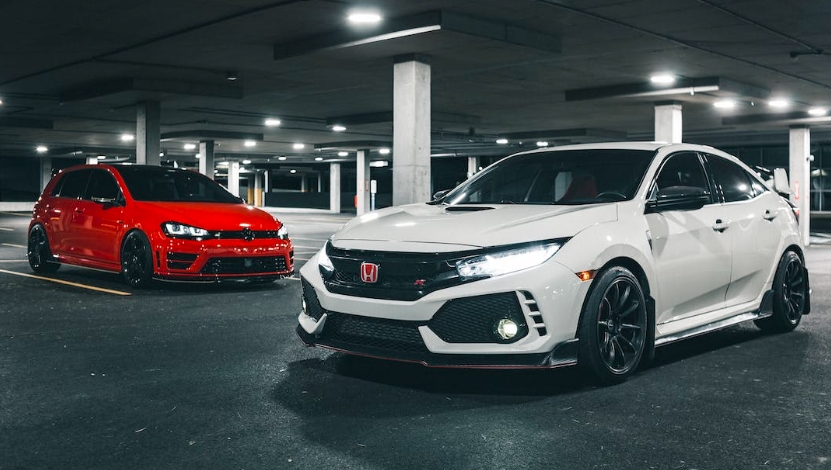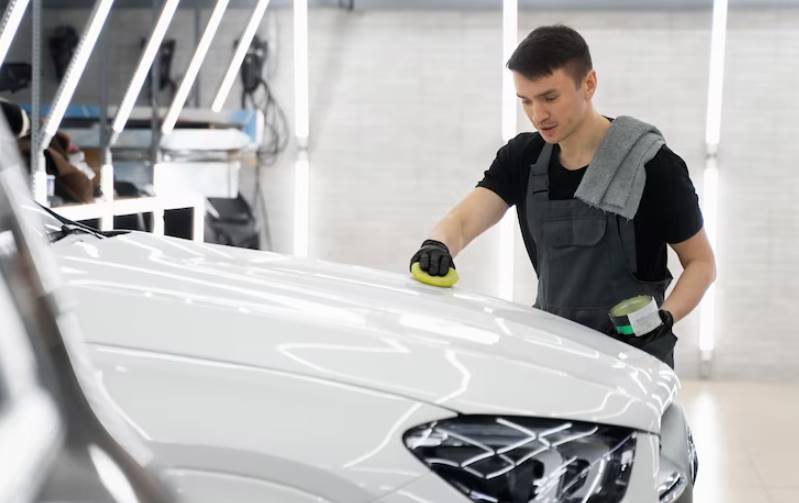Car culture is a term that encompasses the activities, lifestyles, and attitudes surrounding automobiles and their enthusiasts. This culture has grown over the years and it is now considered one of the most important aspects of modern life. From car shows and rallies to car clubs and magazines, car culture has become an integral part of many people’s lives.
The history of car culture dates back to the late 19th century when automobiles were first being mass-produced. As automobiles gained popularity and became a common sight on streets and roads, enthusiasts started to develop car clubs and organizations dedicated to the appreciation of cars. Over the years, car culture has grown and evolved to include both the cars and their owners. Car enthusiasts now have access to car shows and rallies, car clubs, magazines, and websites dedicated to the study and discussion of cars. The development of car culture has created a unique and fascinating world of car enthusiasts and enthusiasts-based activities.
The world of car culture is ever-changing and evolving. As each new generation of car enthusiasts enters the scene, they bring with them new ideas, trends, and technologies that shape and define the culture. As car culture continues to grow, it will remain an important part of our lives and continue to provide endless entertainment and learning opportunities. Rolling History: Exploring the Fascinating World of Car Culture is an in-depth look at the history, evolution, and current state of car culture. From interviews to stories, this book provides a comprehensive look at the culture and its impact on our lives.

The Origins of Car Culture
Trace the early beginnings of car culture and how it evolved over time
The origin of car culture can be traced back to the early 1900s when the automobile was first invented. At this time, cars were expensive and only accessible to the wealthy. Over time, the cost of cars decreased and they became more accessible to all classes of people. This caused car ownership to become a symbol of wealth and status, and it also changed the way people interacted with each other and the environment.
Discuss how car ownership became a symbol of status and identity
Owning a car became a symbol of status and identity for people in the early 1900s. It was a symbol of wealth and power, and it also allowed people to travel more freely and independently. Car ownership also allowed people to express their individual style and personality, which helped to create a sense of community.
Talk about the role of early automobile manufacturers and their impact on car culture
Early automobile manufacturers played a major role in the development of car culture. They created cars that were reliable, stylish, and affordable, which helped to make car ownership more accessible to the public. They also invested in marketing campaigns that promoted their cars as a symbol of status and identity, which further increased their popularity. As a result, car culture was born and it has continued to evolve over the years.
The Different Types of Car Culture
Hot-Rodders
Hot-rodders are considered the original car enthusiasts and are the driving force behind many of the advancements in the world of custom car culture. They are best known for taking classic cars and modifying them with the latest performance and aesthetic upgrades. Popular modifications include engine swaps, suspension modifications, and custom bodywork. Hot-rodders are often seen as the innovators in the car culture landscape and are constantly pushing the boundaries of what is possible with classic cars.
Tuners
Tuners are a more recent addition to the car culture landscape and are characterized by their focus on performance upgrades. They often focus on Japanese cars and are often seen as the main drivers of the import scene. Tuners are often seen as the “hackers” of the car culture landscape and are the ones coming up with new and innovative ways to increase the performance of their cars. Popular modifications include turbocharging and engine swaps.
Classic Car Collectors
Classic car collectors are often seen as the “purists” of the car culture landscape and are focused on preserving the classic cars of the past. They are often seen as the gatekeepers of the classic car culture and are the ones who keep the classic cars alive and in the public consciousness. Classic car collectors often take great pride in their collections and are often seen as the most knowledgeable when it comes to the classic cars of the past.
Lowriders
Lowriders are often seen as the “showmen” of the car culture landscape and are focused on the aesthetic side of car culture. They are often seen as the ones pushing the boundaries of what is possible in terms of customizing cars for show. Popular modifications include hydraulic suspension systems, custom wheels, and intricate paint jobs. Lowriders are often seen as the trendsetters in the car culture landscape and are constantly pushing the boundaries of what is possible with custom cars.
Drifters
Drifters are a unique breed of car enthusiasts and are focused on the art of drifting. They are often seen as the “athletes” of the car culture landscape and are the ones pushing the boundaries of what is possible in terms of car control and precision driving. Popular modifications include suspension upgrades and engine swaps. Drifters are often seen as the daredevils of the car culture landscape and are constantly pushing the boundaries of what is possible with high performance cars.
The Influence of Car Culture on Popular Culture
The influence of car culture on popular culture is undeniable. It is a near-ubiquitous part of our lives and has been so for generations. Cars have come to represent freedom, power, and mobility and they have had a profound impact on the way we experience and interact with the world. Music, movies, and television have all been heavily influenced by car culture.
From Elvis Presley’s ‘Blue Suede Shoes’ to the Beach Boys’ ‘Little Deuce Coupe’, cars have been an integral part of popular music for decades. Movies have also been heavily influenced by car culture. From the classic car chase scenes in ‘The French Connection’ to the fast-paced car racing of ‘The Fast and the Furious’, cars have been a key part of the cinematic experience. Television has also been deeply affected by car culture. From the drag races of ‘The Dukes of Hazard’ to the off-road adventures of ‘Top Gear’, cars have been a major part of the television landscape for decades.
There have been a number of iconic car moments in pop culture history. The ‘Bullitt’ car chase scene between Steve McQueen and the bad guys is one of the most iconic car moments in history. The ‘Gone in 60 Seconds’ car chase scene is another classic. The ‘Fast and the Furious’ franchise has been a huge success and has spawned a number of iconic car moments. The ‘Dukes of Hazard’ car jump and the ‘Cannonball Run’ car race are also iconic car moments.
The Future of Car Culture
The car culture has been a part of our lives for decades, but with the rise of new technologies like electric cars and autonomous vehicles, the landscape of car culture is rapidly changing. These new technologies have a significant impact on the way we experience car culture, both in terms of how we interact with cars and how car culture is evolving.
The availability of electric cars and autonomous vehicles offers new opportunities for customizations and modifications to our vehicles. With the integration of new technologies, such as sensors, cameras, and AI, car owners can experience a level of personalization and customization that was not possible before. This has allowed for the development of new and exciting subcultures, such as the “tuner” culture, which focuses on enhancing and customizing cars through performance and aesthetic modifications.

The rise of electric cars has also had an impact on car culture, as they offer a much more efficient and environmentally friendly alternative to traditional fuel-powered cars. This has led to an increase in the number of people who are interested in electric cars and has created a new subculture of people who are passionate about electric cars. This subculture is often referred to as the “EV subculture” and is characterized by its focus on electric vehicle technology and its potential for the future.
The emergence of autonomous vehicles has also had an impact on car culture, as they offer a new level of convenience and safety. Autonomous vehicles are becoming increasingly popular and are expected to revolutionize the way we experience car culture. Autonomous vehicles are equipped with several advanced technologies, such as sensors, cameras, and AI, that can help to reduce the risk of accidents and improve safety.
As technology continues to advance, it is likely that car culture will continue to evolve and new subcultures will emerge. It is difficult to predict exactly how car culture will evolve in the future, but it is certain that new technologies will continue to have a profound impact on the way we experience car culture.
Conclusion
Rolling history has been an engaging exploration into the fascinating world of car culture. From the early beginnings of the automobile to today’s luxury and performance vehicles, we’ve seen how the industry has developed, changed and grown over the years. We’ve explored the many different trends and innovations that have come along in recent years, including electric and autonomous vehicles, as well as the different types of car enthusiasts and hobbyists who keep the car culture alive.
This journey through rolling history has been an incredible experience that has given us the opportunity to uncover the many stories and histories that are connected to the car culture. It has shown us the passion, dedication and commitment of the people who have made it possible for us to enjoy and appreciate the car culture that we have today. We hope that this exploration has inspired you to explore and enjoy the car culture even further, and to continue to appreciate the history and legacy of the automobile.
FAQs
1. What is Rolling History?
Rolling History is a celebration of car culture, its history, and its impact on the world. We explore the fascinating world of car culture by examining the cars of different eras and the stories behind them.
2. What types of cars does Rolling History cover?
Rolling History covers all types of cars from classic to modern. We feature cars from a variety of eras, including pre-war, post-war, and modern cars. We also feature cars from different countries and different styles.
3. What kind of stories does Rolling History tell?
Rolling History tells stories about the cars themselves, their owners, and the people and places that have been shaped by car culture. We look at the history, design, and engineering of cars, as well as the impact they have had on society.
4. Is Rolling History focused on a specific country or region?
Rolling History is global in scope and covers cars from all over the world. We look at cars from all regions, including Europe, the United States, and Asia.
5. Does Rolling History feature interviews with car enthusiasts and experts?
Yes! We feature interviews with car enthusiasts, historians, and experts in the field. We also feature interviews with people who have been impacted by car culture in some way.
6. Does Rolling History cover new car releases?
Yes! We cover new car releases and provide insights and commentary on the latest developments in the automotive industry.
7. Does Rolling History have any special events or gatherings?
Yes! We host various events and gatherings throughout the year. These events are designed to bring together car enthusiasts and celebrate car culture.
8. How can I stay informed about Rolling History and its events?
You can stay informed about Rolling History and its events by signing up for our newsletter, following us on social media, and checking our website for updates.
9. How can I contribute to Rolling History?
We welcome contributions from car enthusiasts and experts in the field. If you have a story or idea to share, please feel free to contact us.
10. Does Rolling History offer any merchandise?
Yes! We offer a variety of merchandise, including shirts, hats, and other items. You can find our selection of merchandise on our website.


















